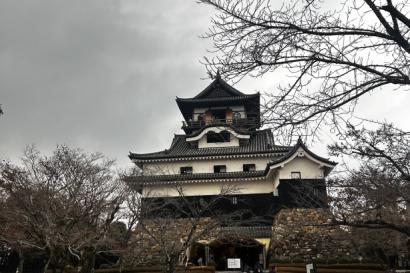Whenever I go on an IES Abroad trip, whether it’s orientation or one of the excursions, if it’s a multiple day trip then we almost always stay in a ryokan or traditional Japanese hotel. If you’ve never been to one before then it’ll be a great way to experience Japanese hospitality, but there may also be a lot of confusion about what you should and shouldn’t do. So I just wanted to share a couple things about staying at a ryokan that’ll allow you to get the most out of your stay there.
When you first get to your room you’ll notice by the door there will be slippers and the floor leading into the next room will be raised. This is the genkan and you should always remove and put on shoes here, then walk around in your room with socks or barefoot. Removing your shoes at the genkan prevents dirt getting tracked into the room, and all Japanese homes and apartments have a genkan for this purpose. So then what are the slippers for? Instead of putting your shoes back on, feel free to slip into the complimentary slippers to walk around the hotel. At the ryokan, the floor of your room will be covered with tatami or straw mats, and it’s very important not to wear shoes or slippers on the tatami to keep it in good condition. One of my favorite things about staying at a ryokan is the tatami because they have a really clean and refreshing smell that I’ve come to associate with comfort because of my experiences at traditional Japanese hotels.
In the center of the main room, there will a low table with floor cushions. On the table, there will be snacks meant to be eaten with tea. Typically, there will be an area with a mini fridge, an electric kettle, cups, and tea bags (usually green tea or roasted green tea) for you to make and enjoy tea time seated around the low table. In the main room, there will also be an area of the room that is slightly raised wood with a flower arrangement or pottery of some kind sitting on it (it’s like an alcove), and it looks like a great place to place your bags, but don’t. This area is called the tokonoma and it’s part of the architecture of the room and is extremely disrespectful to place things here or step or stand on it. Typically, there is also a small area of the room that can be closed off with sliding doors and this is where the table will go when it’s time for the beds to put out. When staying at a ryokan you’ll be sleeping on a futon, which is a traditional Japanese bed with many layers that are put out and away every morning and night. At a certain scheduled time, hotel staff will make rounds to rooms to arrange the room and bed for the night. The hotel staff should fill you in on the details about this, but usually, for IES Abroad trips, we have dinner scheduled at the same time. Dinner and breakfast are usually included when booking a ryokan and as a large group we ate very traditional Japanese food in a private dining room area. Dinner is a large meal with a variety of dishes including things like rice, soup, pickled vegetables, sashimi, sometimes tempura, and various fish dishes, but a lot of these items were unfamiliar for most of us international students, so if something is unfamiliar it’s best to keep an open mind and try it because it could be really delicious. Breakfast is usually buffet style with a lot of options, but still Japanese fare, so there will be a lot of savory options like fish, miso, rice, and salad.
Back in the room, there are two closets, one with a double sliding door that holds all the pieces for the futons and another to hang coats, but you should also be able to find yukata, a light cotton robe. These can be worn to lounge around the hotel in, and I’ve often seen Japanese people wearing their yukata and slippers walking and lounging at the hotel, sometimes even wearing it to dinner. It can be worn to sleep in as pajamas and down to the onsen, or hot spring. I’ve never been in a ryokan that doesn’t have an onsen, so if you stay at one you really should take advantage of the onsen, but make sure to brush up on your onsen etiquette beforehand (there’s usually a booklet in your room or signs in the dressing area).

Payton Letko
<p class="MsoBodyText" style="margin-top:2.35pt; margin-right:9.65pt; margin-bottom:.0001pt; margin-left:5.0pt"><span style="line-height:115%">I grew up in a small farm town but was bitten by the travel-bug shortly after leaving for undergrad. I have a sweet tooth the size of Texas, and can often be found searching for the best treats life has to offer.</span></p>









